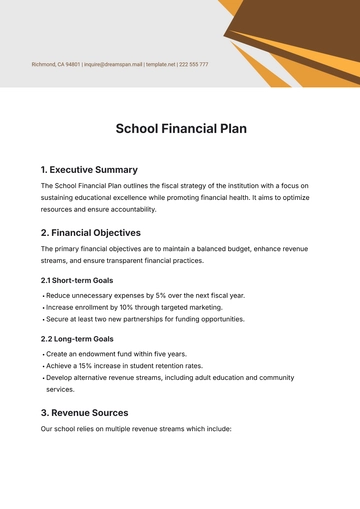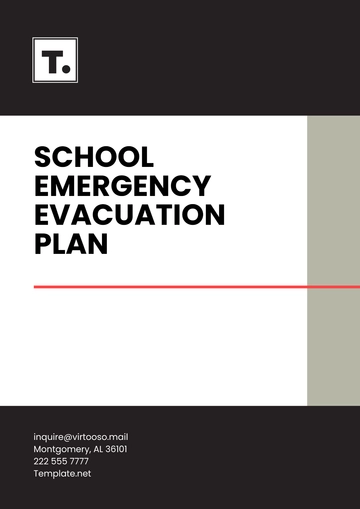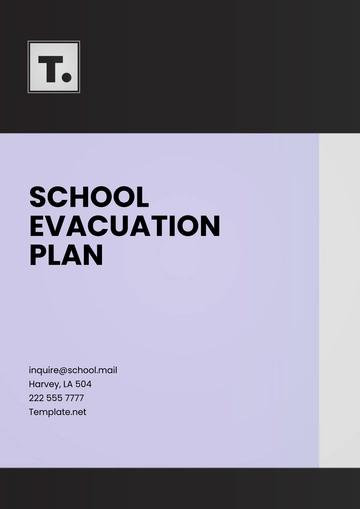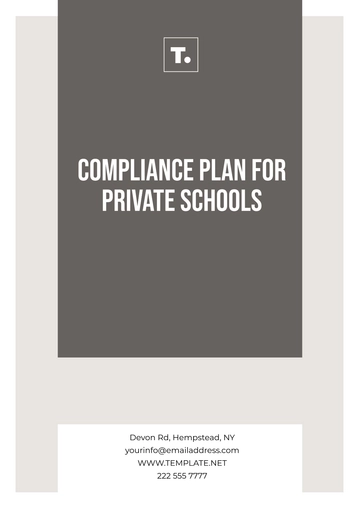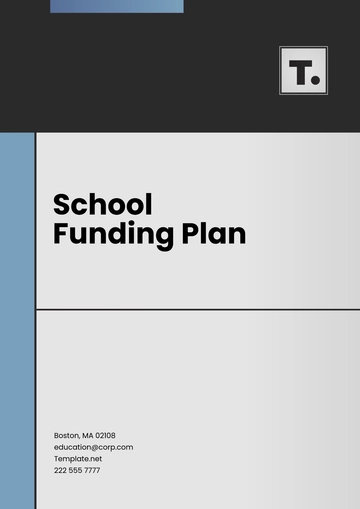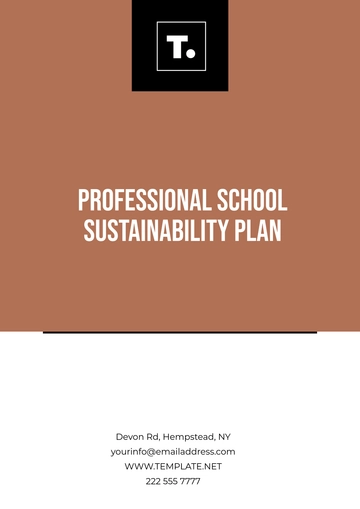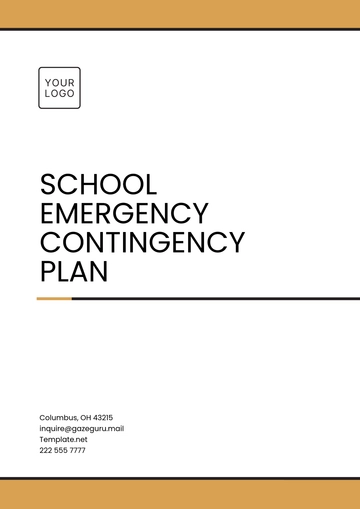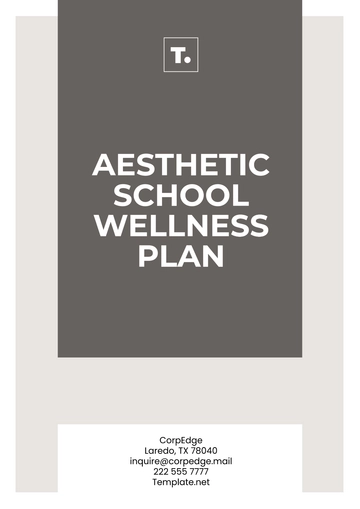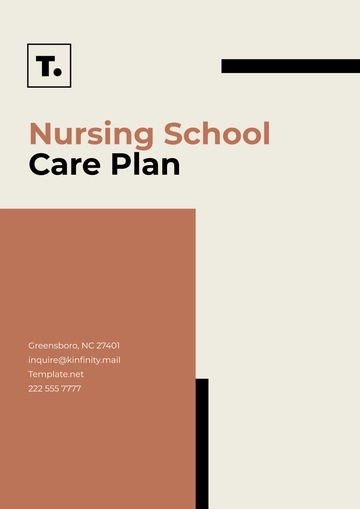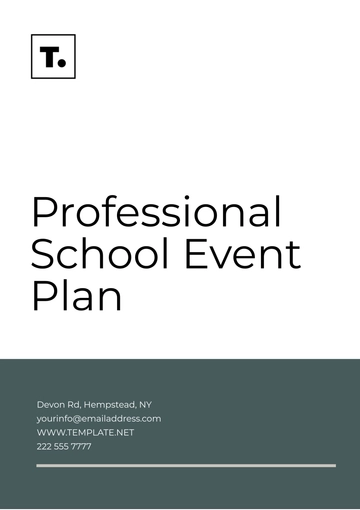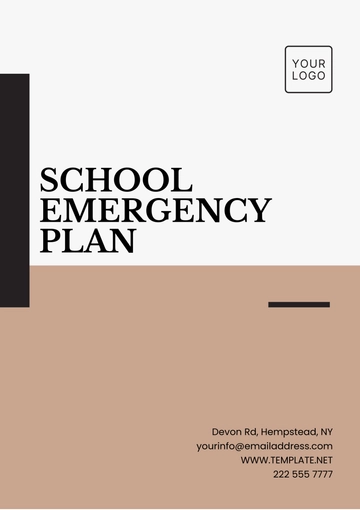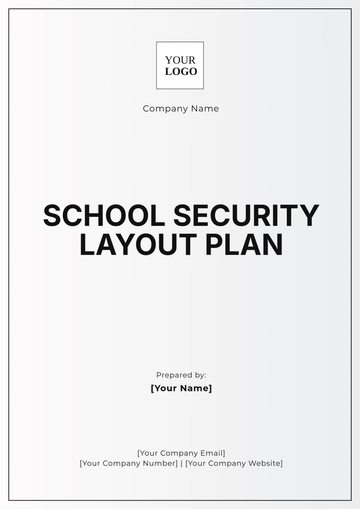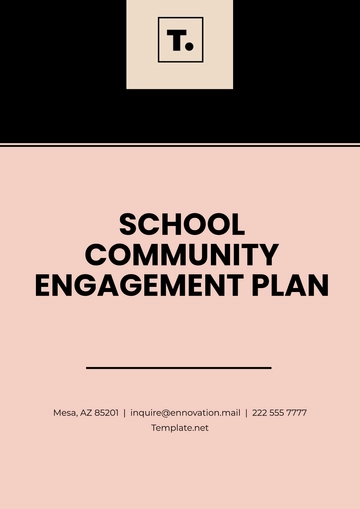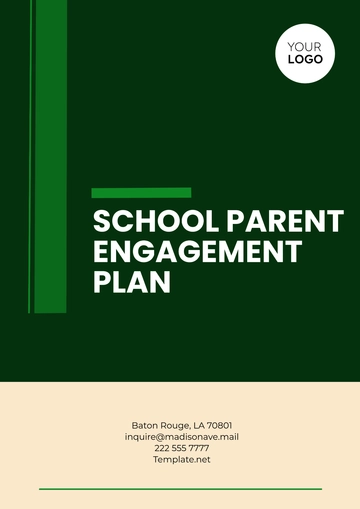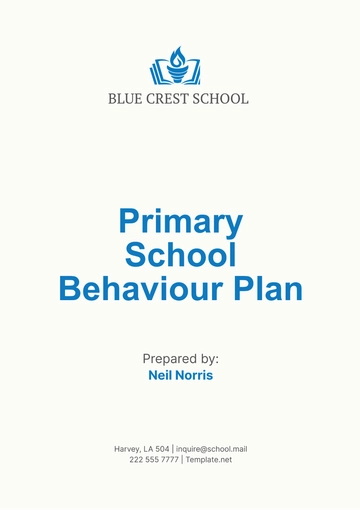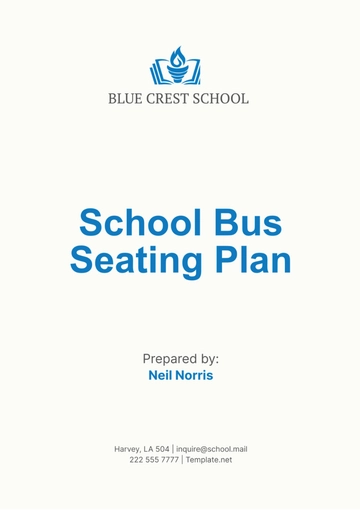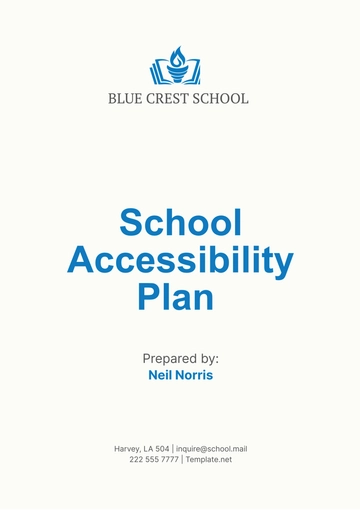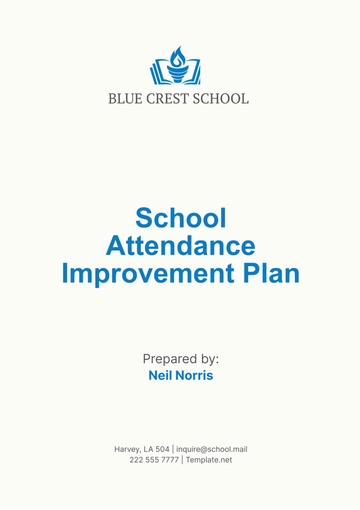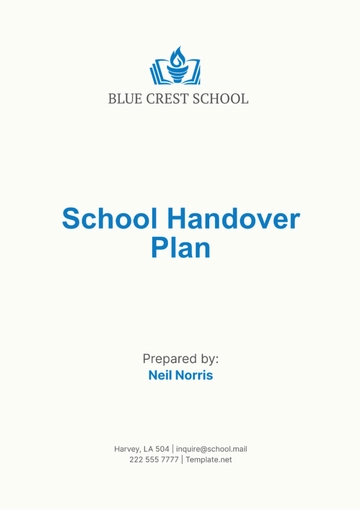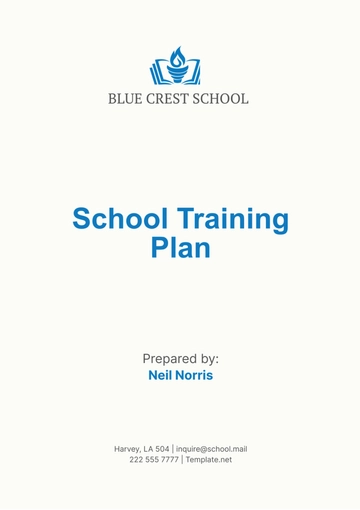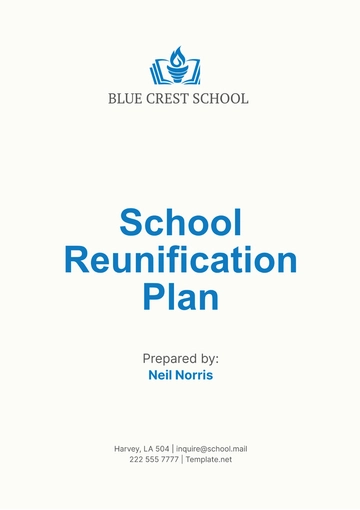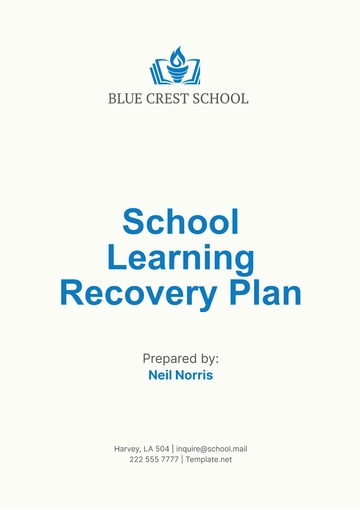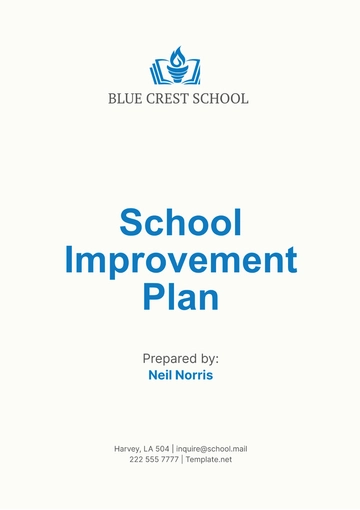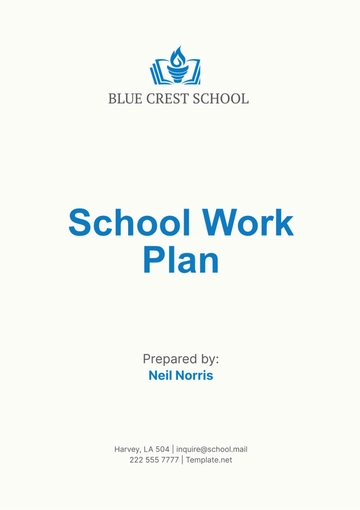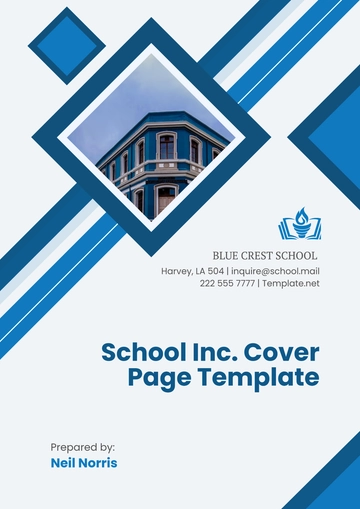Free School Accessibility Plan
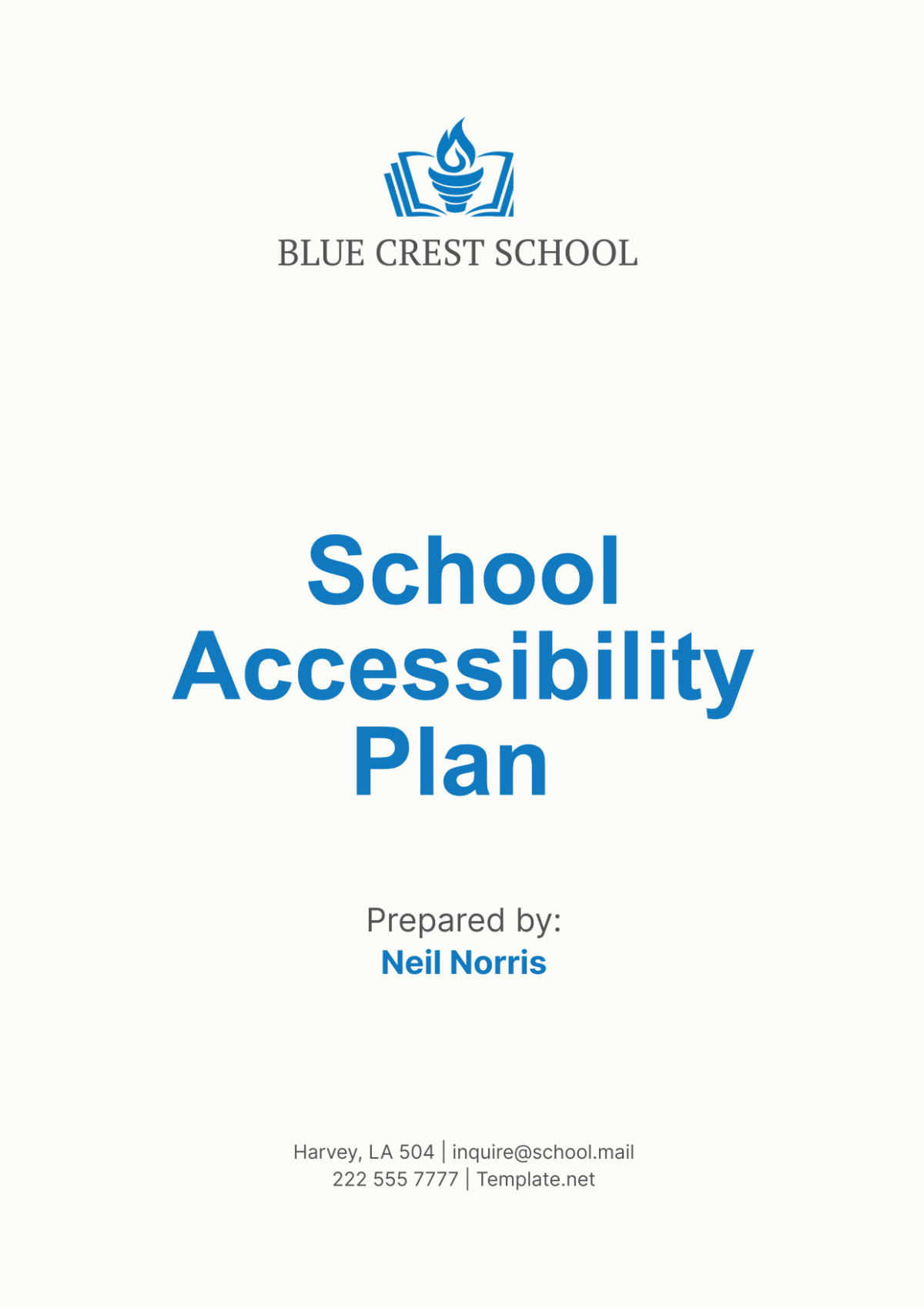
I. Introduction
Ensuring accessibility in education is crucial for fostering an inclusive learning environment where all students, regardless of their physical, sensory, cognitive, or emotional abilities, can thrive. The School Accessibility Plan of [Your Company Name] aims to provide a comprehensive framework for enhancing accessibility across all aspects of the school environment. This document outlines our strategic approach to identifying barriers, implementing solutions, training staff, and continuously evaluating our accessibility practices.
II. Vision and Mission
Vision
To create an inclusive, accessible, and supportive learning environment where every student has the opportunity to succeed.
Our vision is a forward-thinking and comprehensive aspiration that drives every aspect of our school’s accessibility efforts. This vision encompasses several core principles that shape our approach to education and accessibility.
Core Principles of Our Vision:
Inclusivity: Our vision for inclusivity goes beyond merely accommodating students with disabilities; it involves creating a school culture where diversity is celebrated, and all students feel valued and respected. This means fostering an environment where students from all backgrounds and abilities can learn and thrive together, benefiting from a rich tapestry of perspectives and experiences.
Accessibility: We strive to eliminate all physical, sensory, cognitive, and emotional barriers to education. This involves ensuring that our facilities are accessible to all students, that our teaching methods are adaptable to various learning styles, and that our resources are available in formats that meet the needs of all learners.
Supportive Learning Environment: A supportive learning environment is one where students feel safe, encouraged, and motivated to reach their full potential. This includes not only academic support but also emotional and social support, ensuring that students have the resources they need to succeed both inside and outside the classroom.
Student Success: Central to our vision is the success of every student. We define success not only in academic terms but also in terms of personal growth, social development, and the acquisition of life skills. Our goal is to prepare students to be well-rounded individuals who are ready to face the challenges of the future with confidence and competence.
Mission
To ensure that all students have equal access to educational resources, facilities, and opportunities by removing barriers and providing necessary support.
Our mission outlines the practical steps and commitments we make to achieve our vision. It serves as a roadmap for our accessibility initiatives and guides our actions and decisions.
Key Components of Our Mission:
Equal Access to Educational Resources:
We are committed to providing all students with access to the educational materials and resources they need to succeed. This includes ensuring that textbooks, online resources, and classroom materials are available in accessible formats such as braille, large print, and digital versions compatible with screen readers. We also strive to provide access to assistive technologies that support learning, such as text-to-speech software, speech-to-text tools, and adaptive learning platforms.
Accessible Facilities:
Our mission includes ensuring that all physical spaces within the school are accessible to students with disabilities. This involves removing physical barriers by installing ramps, elevators, and automatic doors, as well as modifying restrooms and other facilities to be wheelchair accessible. Additionally, we aim to create sensory-friendly spaces for students with sensory processing disorders, such as quiet rooms and areas with adjustable lighting and sound levels.
Opportunities for All Students:
We believe that every student should have the opportunity to participate in all aspects of school life, including extracurricular activities, sports, and social events. Our mission includes making these opportunities accessible by providing necessary accommodations, such as adaptive sports equipment, sign language interpreters, and transportation services. We also work to ensure that students with disabilities are represented in leadership roles and have a voice in school decision-making processes.
Removing Barriers:
Identifying and removing barriers to education is a continuous process. Our mission involves regularly assessing our policies, practices, and facilities to identify potential obstacles and developing strategies to address them. This includes conducting accessibility audits, gathering feedback from students and families, and staying informed about the latest accessibility standards and best practices.
Providing Necessary Support:
To ensure that all students can succeed, we provide a range of support services tailored to individual needs. This includes academic support, such as tutoring and individualized education plans (IEPs), as well as social and emotional support, such as counseling services and peer mentoring programs. We also offer training and resources for teachers and staff to help them understand and meet the diverse needs of our student population.
Implementation Strategies:
To fulfill our vision and mission, we implement a variety of strategic initiatives and programs:
Professional Development for Staff:
Continuous training and support for teachers and staff are crucial to ensuring they have the skills and knowledge to provide an inclusive and accessible education. This includes regular workshops on inclusive teaching practices, training on the use of assistive technologies, and professional development sessions on disability awareness and support strategies.
Collaboration with Stakeholders:
Engaging with students, families, and the broader community is essential to our mission. We actively seek feedback from these stakeholders and involve them in the planning and implementation of accessibility initiatives. This collaborative approach ensures that our efforts are responsive to the needs and experiences of those directly impacted.
Regular Assessment and Improvement:
We continuously assess the effectiveness of our accessibility initiatives through regular audits, surveys, and performance metrics. This ongoing evaluation allows us to identify areas for improvement and make data-driven decisions to enhance our accessibility efforts. We are committed to staying informed about the latest developments in accessibility and incorporating best practices into our strategies.
Resource Allocation:
Adequate funding and resources are necessary to support our accessibility initiatives. We allocate budget specifically for accessibility improvements, such as facility upgrades, assistive technologies, and support services. By prioritizing these investments, we ensure that our mission of providing equal access and support is realized.
Our vision and mission are the cornerstones of our School Accessibility Plan at [Your Company Name]. They guide our actions, inform our decisions, and inspire us to strive for excellence in creating an inclusive and supportive educational environment. By staying true to these guiding principles, we aim to ensure that every student has the opportunity to succeed and reach their full potential. For any questions or further information, please contact [Your Name] at [Your Email] or [Your Company Number].
III. Identification of Barriers
Identifying barriers is the first step towards creating a fully accessible school environment. This section outlines the types of barriers that may exist and our approach to identifying them.
A. Physical Barriers
Physical barriers are obstacles that prevent or hinder movement and access within the school premises.
Examples:
Inaccessible entrances or exits
Lack of ramps or elevators
Narrow doorways and hallways
Inaccessible restrooms
Insufficient signage
B. Sensory Barriers
Sensory barriers affect individuals with visual, auditory, or other sensory impairments.
Examples:
Poor lighting
Lack of auditory aids
Inadequate visual signage
Inaccessible digital content
C. Cognitive Barriers
Cognitive barriers impact students with learning disabilities or cognitive impairments.
Examples:
Complex instructions
Overly stimulating environments
Lack of assistive technologies
Inflexible teaching methods
D. Emotional and Social Barriers
Emotional and social barriers affect students' ability to engage and participate fully in the school environment.
Examples:
Bullying and harassment
Lack of social support
Insufficient mental health resources
IV. Implementation of Solutions
Addressing the identified barriers requires a strategic and comprehensive approach. This section outlines the solutions we will implement to enhance accessibility in our school.
A. Physical Accessibility
Objectives:
Ensure all areas of the school are accessible to students with physical disabilities.
Key Solutions:
Ramps and Elevators: Install ramps and elevators to provide access to all levels of the building.
Wider Doorways and Hallways: Modify doorways and hallways to accommodate wheelchairs and other mobility devices.
Accessible Restrooms: Equip restrooms with accessible features such as grab bars, lower sinks, and wider stalls.
Signage: Improve signage throughout the school to include braille and large print.
Solution | Responsible Party | Timeline |
|---|---|---|
Install Ramps and Elevators | Facilities Manager | 6 months |
Modify Doorways and Hallways | Maintenance Team | 1 year |
Equip Accessible Restrooms | Facilities Manager | 6 months |
Improve Signage | Accessibility Coordinator | 3 months |
B. Sensory Accessibility
Objectives:
Create an environment that accommodates students with sensory impairments.
Key Solutions:
Enhanced Lighting: Improve lighting in classrooms and common areas to support students with visual impairments.
Auditory Aids: Provide auditory aids such as hearing loops and assistive listening devices.
Accessible Digital Content: Ensure all digital content, including websites and learning platforms, is accessible to students with visual and auditory impairments.
Solution | Responsible Party | Timeline |
|---|---|---|
Improve Lighting | Facilities Manager | 3 months |
Provide Auditory Aids | IT Department | 6 months |
Ensure Accessible Digital Content | IT Department | Ongoing |
C. Cognitive Accessibility
Objectives:
Support students with cognitive impairments through tailored resources and teaching methods.
Key Solutions:
Simplified Instructions: Use clear and simple instructions for assignments and classroom activities.
Assistive Technologies: Provide access to assistive technologies such as text-to-speech software and adaptive learning tools.
Flexible Teaching Methods: Train teachers in differentiated instruction to accommodate various learning styles and abilities.
Solution | Responsible Party | Timeline |
|---|---|---|
Simplify Instructions | Teaching Staff | Ongoing |
Provide Assistive Technologies | IT Department | 6 months |
Train Teachers in Differentiated Instruction | Academic Coordinator | Ongoing |
D. Emotional and Social Accessibility
Objectives:
Foster a supportive and inclusive school environment that addresses emotional and social barriers.
Key Solutions:
Anti-Bullying Programs: Implement comprehensive anti-bullying programs to create a safe and respectful environment.
Social Support: Establish peer mentoring and buddy systems to support students in building social connections.
Mental Health Resources: Increase access to mental health resources, including counseling services and mental health education.
Solution | Responsible Party | Timeline |
|---|---|---|
Implement Anti-Bullying Programs | School Counselor | Ongoing |
Establish Peer Mentoring Systems | Social Worker | 3 months |
Increase Access to Mental Health Resources | School Counselor | Ongoing |
V. Staff Training
Providing comprehensive training for staff is essential to ensure they are equipped to support students with diverse needs. This section outlines our approach to staff training.
A. Professional Development Programs
Objectives:
Equip staff with the knowledge and skills to support students with disabilities.
Key Components:
Disability Awareness: Training sessions to increase understanding and awareness of different disabilities.
Inclusive Teaching Practices: Workshops on inclusive teaching practices and strategies for differentiating instruction.
Use of Assistive Technologies: Training on how to use assistive technologies effectively in the classroom.
Program | Responsible Party | Timeline |
|---|---|---|
Disability Awareness | Accessibility Coordinator | Quarterly |
Inclusive Teaching Practices | Academic Coordinator | Bi-Annual |
Use of Assistive Technologies | IT Department | Ongoing |
B. Continuous Improvement
Objectives:
Foster a culture of continuous improvement through ongoing training and feedback.
Key Components:
Regular Feedback: Collect feedback from staff on training effectiveness and areas for improvement.
Updated Training Modules: Regularly update training modules to reflect the latest research and best practices in accessibility.
Professional Learning Communities: Establish professional learning communities where staff can share experiences and strategies.
Component | Responsible Party | Timeline |
|---|---|---|
Collect Feedback | Academic Coordinator | Ongoing |
Update Training Modules | Accessibility Coordinator | Annually |
Establish Professional Learning Communities | Academic Coordinator | Ongoing |
VI. Student and Family Engagement
Engaging students and families in the accessibility plan is crucial for its success. This section outlines our approach to involving students and families in the planning and implementation process.
A. Student Involvement
Objectives:
Empower students to take an active role in creating an inclusive school environment.
Key Components:
Student Committees: Establish student committees to provide input on accessibility initiatives.
Peer Support Programs: Develop peer support programs where students can assist their peers with disabilities.
Feedback Mechanisms: Create channels for students to provide feedback on accessibility issues.
Component | Responsible Party | Timeline |
|---|---|---|
Establish Student Committees | School Counselor | 3 months |
Develop Peer Support Programs | Social Worker | 6 months |
Create Feedback Mechanisms | Academic Coordinator | Ongoing |
B. Family Engagement
Objectives:
Involve families in the planning and implementation of accessibility initiatives.
Key Components:
Family Workshops: Offer workshops to educate families on accessibility and support strategies.
Regular Communication: Maintain regular communication with families about accessibility initiatives and updates.
Feedback Surveys: Conduct surveys to gather family feedback on accessibility needs and improvements.
Component | Responsible Party | Timeline |
|---|---|---|
Offer Family Workshops | School Counselor | Quarterly |
Maintain Regular Communication | Academic Coordinator | Ongoing |
Conduct Feedback Surveys | Accessibility Coordinator | Annually |
VII. Evaluation and Monitoring
Regular evaluation and monitoring are essential to ensure the effectiveness of the accessibility plan. This section outlines our approach to evaluating and monitoring accessibility initiatives.
A. Evaluation Methods
Objectives:
Assess the effectiveness of accessibility initiatives and identify areas for improvement.
Key Components:
Regular Audits: Conduct regular audits of physical and digital accessibility.
Performance Metrics: Develop metrics to measure the success of accessibility initiatives.
Stakeholder Feedback: Gather feedback from students, families, and staff on the effectiveness of accessibility measures.
Method | Responsible Party | Timeline |
|---|---|---|
Conduct Regular Audits | Accessibility Coordinator | Bi-Annual |
Develop Performance Metrics | Academic Coordinator | 6 months |
Gather Stakeholder Feedback | School Counselor | Ongoing |
B. Continuous Improvement
Objectives:
Foster a culture of continuous improvement through ongoing evaluation and feedback.
Key Components:
Action Plans: Develop action plans based on evaluation findings to address identified issues.
Regular Updates: Regularly update the accessibility plan to reflect the latest best practices and feedback.
Stakeholder Involvement: Involve students, families, and staff in the evaluation and improvement process.
Component | Responsible Party | Timeline |
|---|---|---|
Develop Action Plans | Accessibility Coordinator | Ongoing |
Regularly Update Plan | Academic Coordinator | Annually |
Involve Stakeholders | School Counselor | Ongoing |
VIII. Conclusion
The School Accessibility Plan of [Your Company Name] is designed to create an inclusive and supportive learning environment for all students. By identifying and addressing barriers, implementing comprehensive solutions, providing ongoing staff training, and engaging students and families, we aim to ensure that every student has the opportunity to succeed. Continuous evaluation and improvement are essential to maintaining the effectiveness of our accessibility initiatives.
For any questions or further information, please contact [Your Name] at [Your Email] or [Your Company Number].
This comprehensive School Accessibility Plan provides a detailed framework for enhancing accessibility across all aspects of the school environment. By continuously evaluating and improving our practices, [Your Company Name] aims to create a learning environment that is inclusive, supportive, and accessible to all students.
- 100% Customizable, free editor
- Access 1 Million+ Templates, photo’s & graphics
- Download or share as a template
- Click and replace photos, graphics, text, backgrounds
- Resize, crop, AI write & more
- Access advanced editor
Ensure inclusivity with Template.net's School Accessibility Plan Template. This customizable tool empowers educational institutions to enhance accessibility for all students and staff. Utilize our AI editor to create tailored strategies, improve physical and digital accessibility, and comply with regulations. Perfect for fostering an inclusive learning environment and ensuring equitable access across your school community.
You may also like
- Finance Plan
- Construction Plan
- Sales Plan
- Development Plan
- Career Plan
- Budget Plan
- HR Plan
- Education Plan
- Transition Plan
- Work Plan
- Training Plan
- Communication Plan
- Operation Plan
- Health And Safety Plan
- Strategy Plan
- Professional Development Plan
- Advertising Plan
- Risk Management Plan
- Restaurant Plan
- School Plan
- Nursing Home Patient Care Plan
- Nursing Care Plan
- Plan Event
- Startup Plan
- Social Media Plan
- Staffing Plan
- Annual Plan
- Content Plan
- Payment Plan
- Implementation Plan
- Hotel Plan
- Workout Plan
- Accounting Plan
- Campaign Plan
- Essay Plan
- 30 60 90 Day Plan
- Research Plan
- Recruitment Plan
- 90 Day Plan
- Quarterly Plan
- Emergency Plan
- 5 Year Plan
- Gym Plan
- Personal Plan
- IT and Software Plan
- Treatment Plan
- Real Estate Plan
- Law Firm Plan
- Healthcare Plan
- Improvement Plan
- Media Plan
- 5 Year Business Plan
- Learning Plan
- Marketing Campaign Plan
- Travel Agency Plan
- Cleaning Services Plan
- Interior Design Plan
- Performance Plan
- PR Plan
- Birth Plan
- Life Plan
- SEO Plan
- Disaster Recovery Plan
- Continuity Plan
- Launch Plan
- Legal Plan
- Behavior Plan
- Performance Improvement Plan
- Salon Plan
- Security Plan
- Security Management Plan
- Employee Development Plan
- Quality Plan
- Service Improvement Plan
- Growth Plan
- Incident Response Plan
- Basketball Plan
- Emergency Action Plan
- Product Launch Plan
- Spa Plan
- Employee Training Plan
- Data Analysis Plan
- Employee Action Plan
- Territory Plan
- Audit Plan
- Classroom Plan
- Activity Plan
- Parenting Plan
- Care Plan
- Project Execution Plan
- Exercise Plan
- Internship Plan
- Software Development Plan
- Continuous Improvement Plan
- Leave Plan
- 90 Day Sales Plan
- Advertising Agency Plan
- Employee Transition Plan
- Smart Action Plan
- Workplace Safety Plan
- Behavior Change Plan
- Contingency Plan
- Continuity of Operations Plan
- Health Plan
- Quality Control Plan
- Self Plan
- Sports Development Plan
- Change Management Plan
- Ecommerce Plan
- Personal Financial Plan
- Process Improvement Plan
- 30-60-90 Day Sales Plan
- Crisis Management Plan
- Engagement Plan
- Execution Plan
- Pandemic Plan
- Quality Assurance Plan
- Service Continuity Plan
- Agile Project Plan
- Fundraising Plan
- Job Transition Plan
- Asset Maintenance Plan
- Maintenance Plan
- Software Test Plan
- Staff Training and Development Plan
- 3 Year Plan
- Brand Activation Plan
- Release Plan
- Resource Plan
- Risk Mitigation Plan
- Teacher Plan
- 30 60 90 Day Plan for New Manager
- Food Safety Plan
- Food Truck Plan
- Hiring Plan
- Quality Management Plan
- Wellness Plan
- Behavior Intervention Plan
- Bonus Plan
- Investment Plan
- Maternity Leave Plan
- Pandemic Response Plan
- Succession Planning
- Coaching Plan
- Configuration Management Plan
- Remote Work Plan
- Self Care Plan
- Teaching Plan
- 100-Day Plan
- HACCP Plan
- Student Plan
- Sustainability Plan
- 30 60 90 Day Plan for Interview
- Access Plan
- Site Specific Safety Plan
